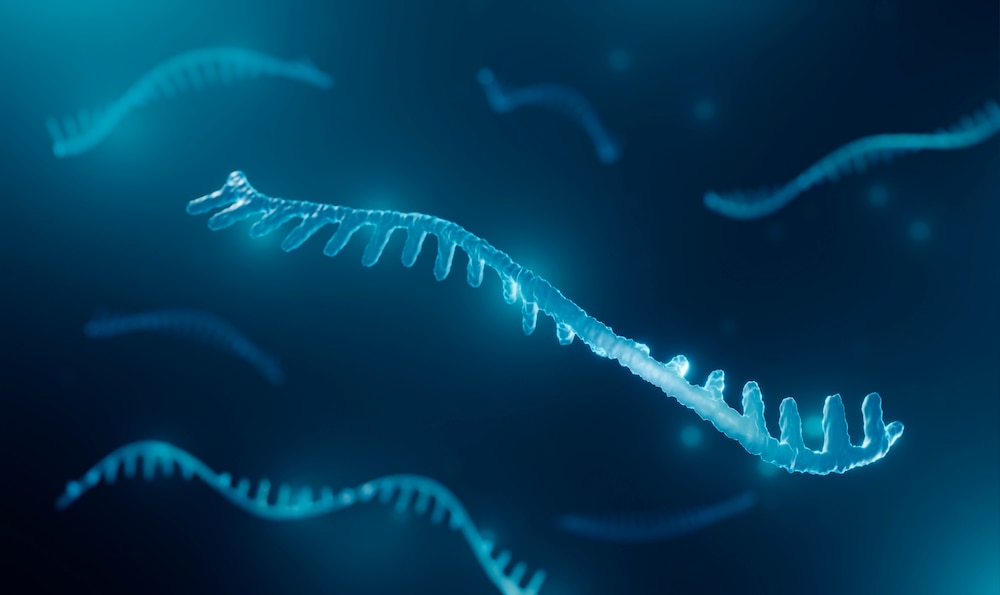Create a free profile to get unlimited access to exclusive videos, sweepstakes, and more!
Precursor to life that spawned billions of years ago was (sort of) recreated in a lab
It's the ultimate blast from the past.

In the beginning, there were no nature documentaries. No cameras. No video footage of the first life on Earth forming before our eyes and narrated by David Attenborough.
How life emerged on this planet still remains unknown. For now, we can only imagine, but a team of researchers led by Ryo Mizuuchi of the University of Tokyo just got closer to finding out what might have happened about 4 billion years ago. Mizuuchi, who led a study recently published in Nature Communcations, and his team were able to (against even their expectations) create an RNA molecule that can self-replicate and evolve on its own.
This is kind of a big deal because it is the first evidence that simple biomolecules have the potential to give rise to the more complex systems that may have led to life when Earth was still young. It is not an exact recreation of a process that led to early life, since no one really knows what that would be, but it does give an idea as to what might have happened. This RNA not only clones itself but can diversify and become more complex. Meaning, it goes through evolution as Darwin — who must be thrilled in a parallel universe somewhere — predicted.
“RNA replicated via translation of the self-encoded replicase,” Mizuuchi told SYFY WIRE. “Darwinian evolution was realized by repeating replication and dilution processes. Replication makes RNA offspring with different inheritable traits; dilution makes room for them to flourish.”
When one of these offspring becomes better at replicating itself than the others, more efficient replication means more offspring, which take over the population. Evolution happens right there in a petri dish. Something of an RNA translation system was extracted from e.coli bacteria. The researchers needed this system of RNAs and proteins to produce replicase, an enzyme that acts as a catalyst for RNA synthesis, switching on the replication of RNA and using the information in a molecule to create clones. It encodes that information to form identical molecules.
Primordial Earth is thought to have been bubbling with nonbiological chemicals until they combined into RNA and other biomolecules, but even then, those molecules hadn’t yet figured out how to breathe life into anything. They would need to undergo enough processes to put together more complex molecules. These molecules would make up cells, which developed into complex cells that somehow organized and reorganized themselves into primitive life-forms. These organisms would continue evolving into the ancestors of life as we know it.
“RNA must establish a way to use different resources one after another for sustained diversification and coexistence, but they are just mere molecules,” said Mizuuchi. “We could not imagine how non-living chemical species could spontaneously develop such innovation.”
This explains why the research team never expected their own results. If more than one species are vying for the same resources, they cannot possibly coexist, because one will eventually beat out the other. The other species has to find what it needs to sustain itself somewhere else if it doesn’t want to die out. This is the competitive exclusion principle. The thing with RNA is, they are not organisms. How these molecules can figure it out is still a mystery, but that they figured it out at all could hint at how they go from lifeless to being part of something living.
We may never really know what happened at the dawn of life. The RNA we can study is from modern bacteria and archaea, descendants of whatever started crawling on Earth eons before a dinosaur ever hatched. Mizuuchi thinks RNA must have gone along for the ride of evolution for billions of years, and that his research has brought up more questions whose answers are lost somewhere in deep time. Biological functions had to develop somehow, possibly backed up by RNA and proteins before DNA appeared, and after DNA, so did entire genomes.
“The evolution of complexity seen in our experiment is just the beginning,” he said. “Many unwitnessed events should occur before living systems come into being.”


























